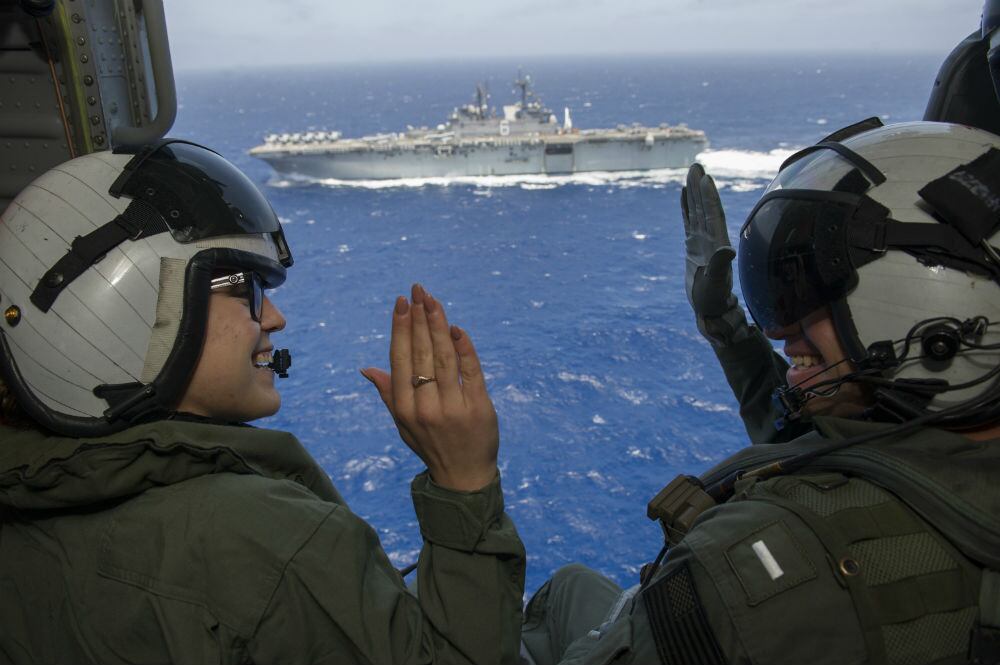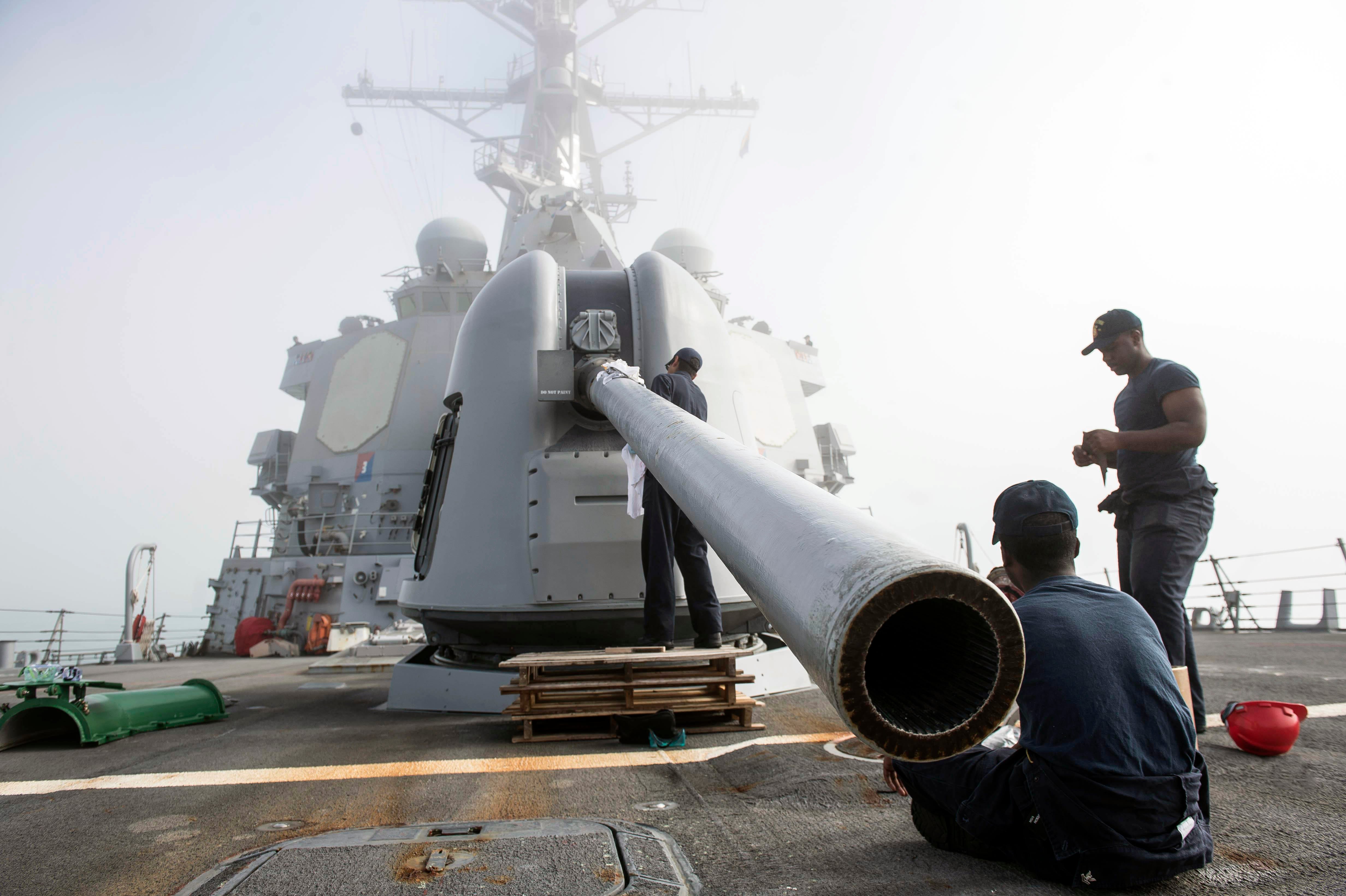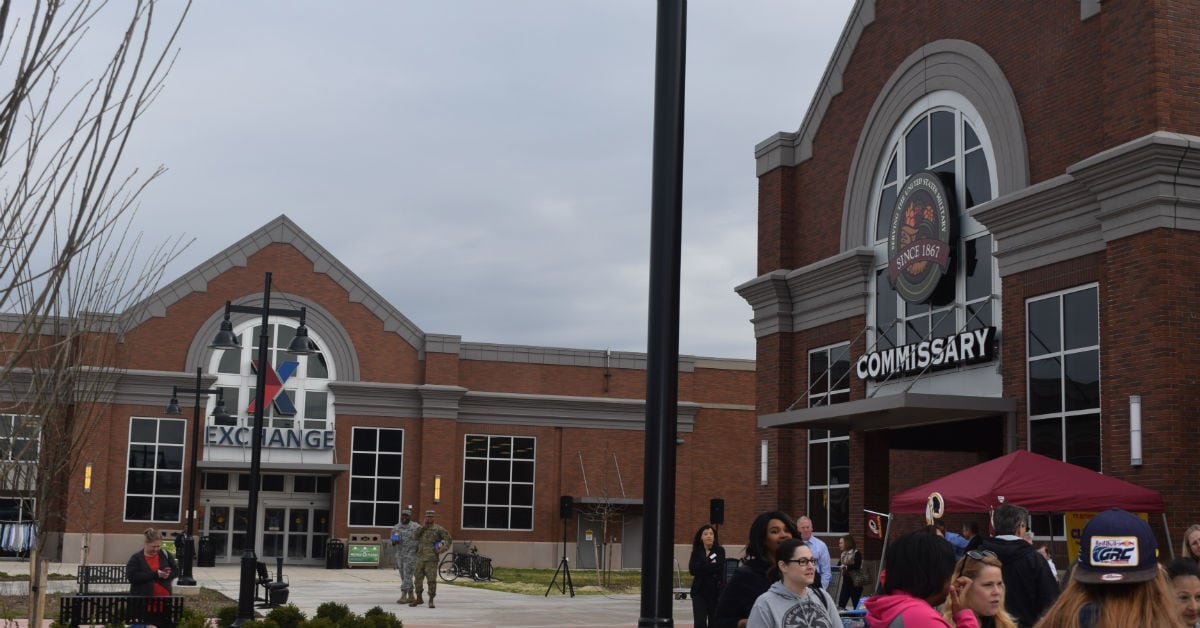Forward deployed sailors home-ported in Japan, Guam, and Spain could be getting longer sea-duty tours in the coming years.
Chief of Naval Personnel Vice Adm. Robert P. Burke has asked for an exception to Department of Defense policies that, if approved, would allow for an increase of overseas-based sea duty tours for a maximum tour of up to four years.
Current rules only allow for a maximum of three years.
The move, officials say, will allow the Navy to keep sea duty billets manned longer, and would ultimately save money in transfer costs.
“The purpose of this request is to increase continuity in our sea duty commands in the FDNF,” said Lt. Richard Moore, spokesman for the chief of naval personnel. “The request was submitted in November and is still being adjudicated by [DoD].”
RELATED

What’s not clear, however, is how the policy would impact those currently on tours or with orders in hand.
For sailors who want to extend their tours overseas, the Overseas Tour Incentives Extension Program, or OTEIP, remains in effect and offers eligible sailors incentives for extending overseas an additional year.
In exchange for a one-year extension, those approved for the program can select to receive either additional pay of $80 per month, a 30-day R&R leave of absence during the extension, or 15-days R&R and round-trip transportation at government expense to the United States.
Funding transportation within the United States, however, would remain the responsibility of the traveling sailor.
Increasing overseas sea duty tour lengths comes as the Navy is working to get U.S.- and Hawaii-based sailors to finish their sea tours.
In December, the Navy announced a push to get 61,000 first-term sailors with end-of-service dates prior to their actual rotation dates to commit to the extra time.
In exchange, the Navy waived up-or-out limits and allowed sailors to bypass the Navy’s C-way re-up approval system.

Though not specifically an aim of this program, extending these tours would bring overseas time more in line with the Navy’s Sea Shore Flow, which sets sea and shore tour lengths for every Navy rating throughout the career span.
In sea intensive ratings, overseas tour lengths can be up to two years shorter than those based in the U.S. and Hawaii.
In an additional development, Navy personnel officials announced incentives to get first-term forward-deployed sailors to extend beyond their original enlistments.
The Navy has outlined various perks designed to coax sailors already serving in sea billets overseas to extend to 48-months and potentially even beyond that.
“Our goal is to reward those sailors who volunteer to extend to meet the demands from the fleet,” said Rear Adm. John Meier, director of the Career Management Department at Navy Personnel Command.
“In addition to the incentives already in place, which remain options for sailors who meet extension criteria, these additional incentives should make it easier for sailors who make the decision to extend.”
According to the message, sailors who voluntarily extend their forward deployed sea duty tour to at least 48 months will have any remaining sea time left on their prescribed sea tour waived.
This means these sailors will be allowed to rotate straight to shore duty for their next assigned tour instead of having to finish their remaining sea duty time at a U.S.-based homeport command.
This is a good deal for sailors in 48 of the Navy’s 75 ratings whose sea duty tours extend beyond four years, many of whom could use the incentive to shave off up to year of required sea duty time.
Sailors whose extensions will keep them in their current overseas billet for at least 12 months or more will get what Navy personnel officials are referring to as “preferential consideration” when they pick their next set of orders.
Some sailors could also qualify for extra money.
Those E-5 through E-9 sailors in the 33 skills on the Sea Duty Incentive Pay chart have the option of applying for SDIP. Extensions of 12 to 48 months can result in receiving bonus pay of up to $1,000 per month for their extension.
That money is paid in a lump sum up front once the extension is authorized and in effect.
The Navy is also approving sailors E-3 and below to now bring their families with them on FDNF assignments, provided their orders are to a location where dependents are authorized.
As of January 2016, over 2,500 sailors had been approved for the extensions and incentives.
Mark D. Faram is a former reporter for Navy Times. He was a senior writer covering personnel, cultural and historical issues. A nine-year active duty Navy veteran, Faram served from 1978 to 1987 as a Navy Diver and photographer.




